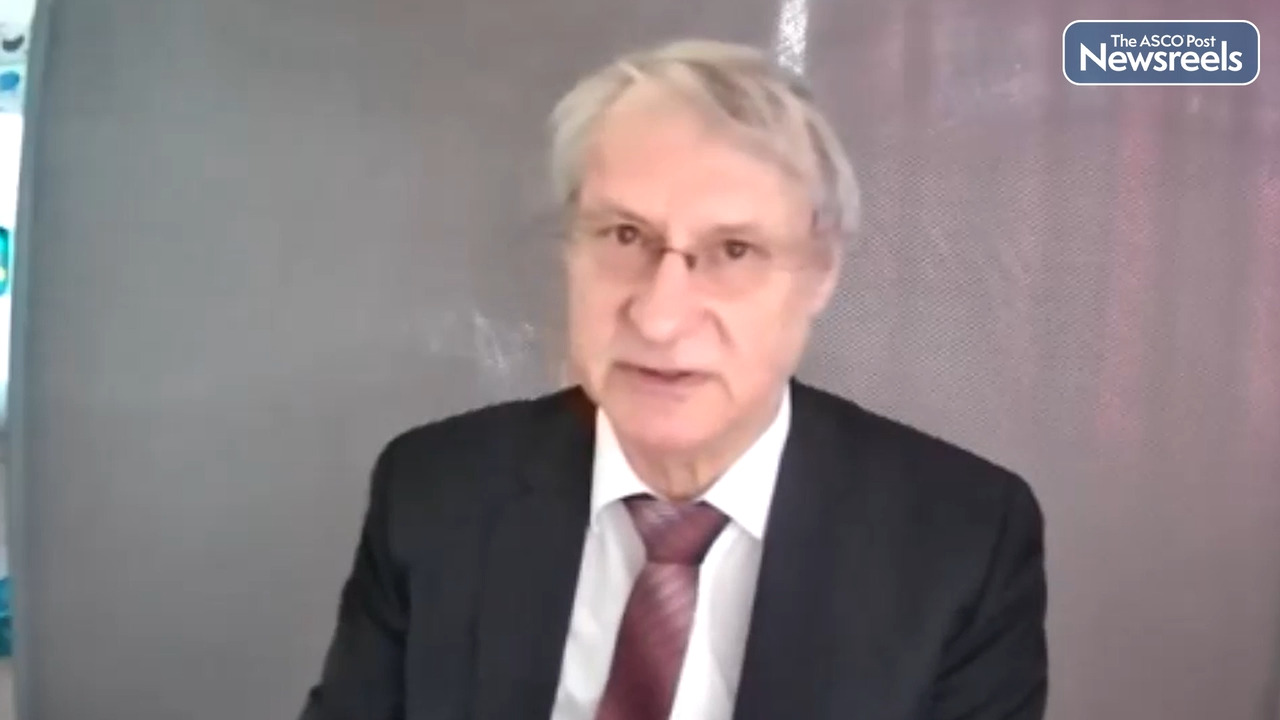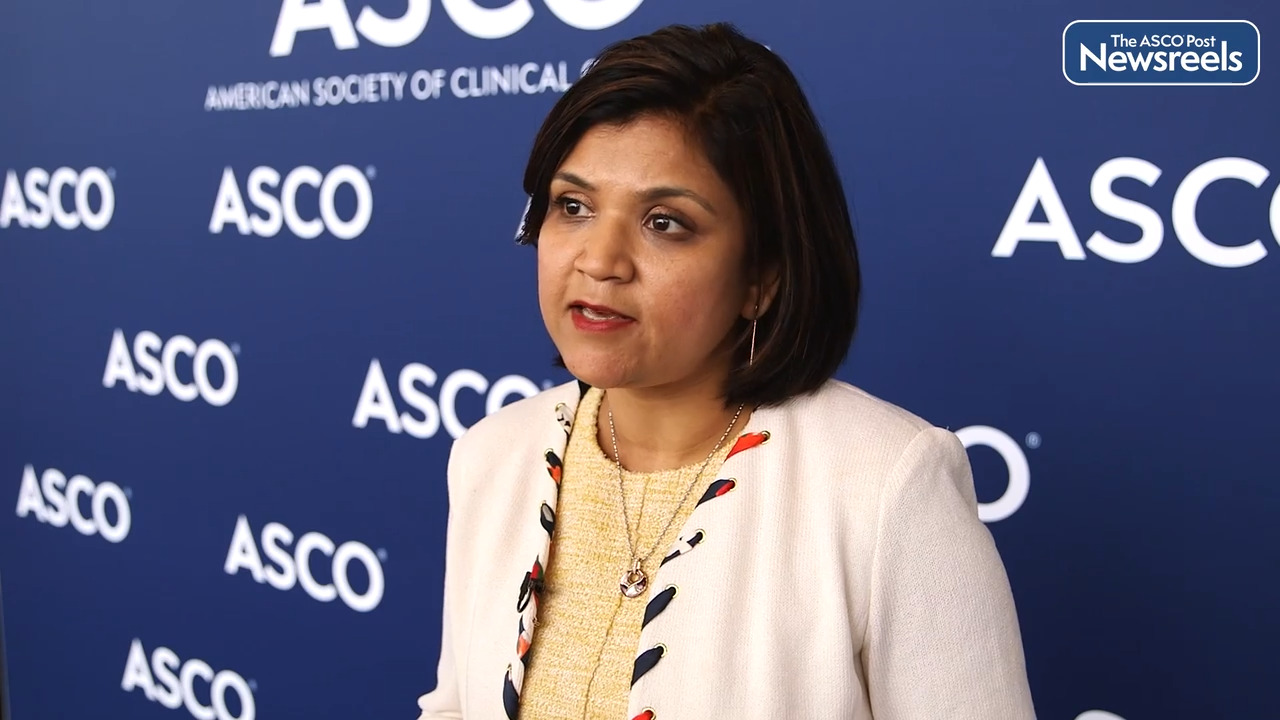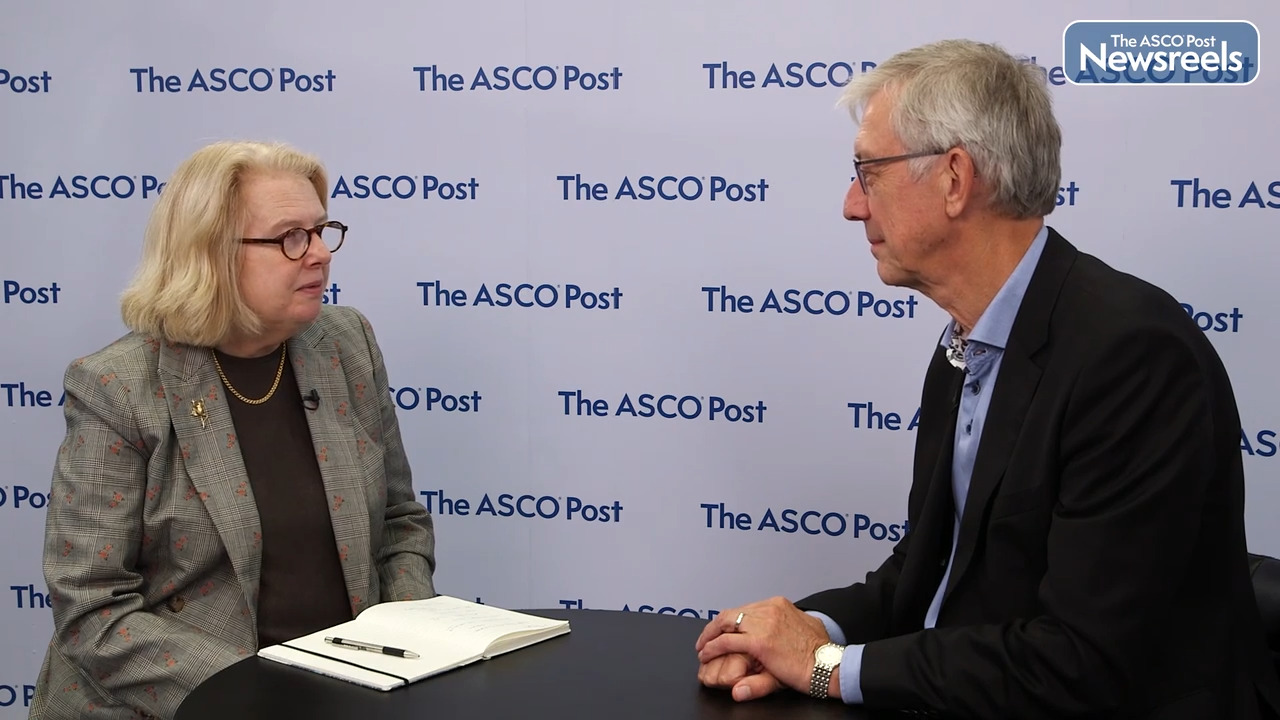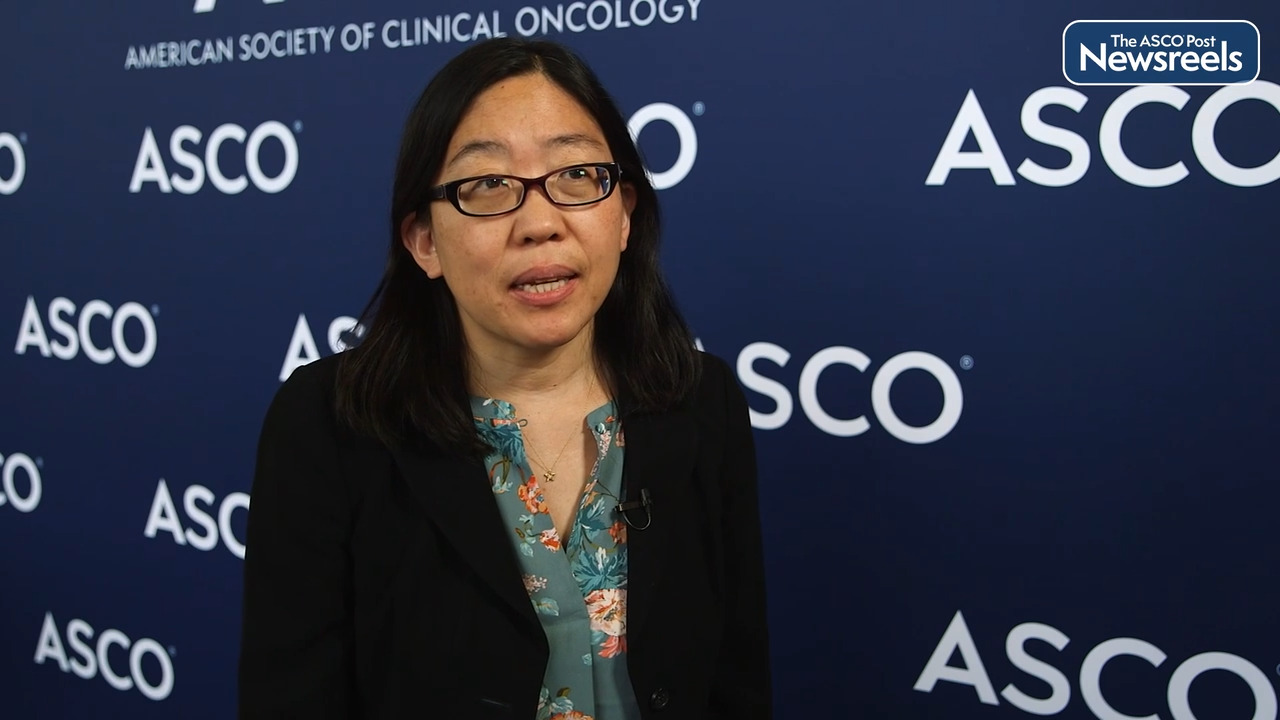Mairéad G. McNamara, PhD, MBBCh, on Neuroendocrine Carcinoma: Findings on Liposomal Irinotecan Plus Fluorouracil and Folinic Acid or Docetaxel
2022 ASCO Annual Meeting
Mairéad G. McNamara, PhD, MBBCh, of The Christie NHS Foundation Trust, discusses phase II findings of the NET-02 trial, which explored an unmet need in the second-line treatment of patients with progressive, poorly differentiated extrapulmonary neuroendocrine carcinoma. In the trial, the combination of liposomal irinotecan, fluorouracil, and folinic acid, but not docetaxel, met the primary endpoint of 6-month progression-free survival rate (Abstract 4005).
Transcript
Disclaimer: This video transcript has not been proofread or edited and may contain errors.
The prognosis for patients with poorly differentiated neuroendocrine carcinoma, which is extrapulmonary is poor. Most of these patients present with advanced disease and their prognosis is usually less than a year. The treatment for these patients is predominantly like small cell lung cancer or lung neuroendocrine carcinoma. With these patients with extra pulmonary neuroendocrine carcinoma, they have an aggressive histology with a KI67, by definition being greater than 20%. The treatment in the first line advanced setting has been a platinum based treatment for the last 30 years and there's no standard treatment for a second line, and this is an area of unmet need. And therefore the NET-02 trial addresses this unmet need. In the NET-O2 trial, one of the treatment arms is liposomal irinotecan 5-fluorouracil folinic acid. This has been found and has been reported to increase intratumoral levels of irinotecan and SN-38, which is the active metabolite of irinotecan. The second arm in NET-02 trial is docetaxel, which has been used as a standard of care option in small cell lung carcinoma as per the NCCN guidelines. The key eligibility for this study was that patients should have extrapulmonary neuroendocrine carcinoma grade 3. With a KI67 of greater than 20% have received previous platinum based treatment and have an equal performance status of less than or equal to two. The primary endpoint for this study was six month PFS rate, with secondary endpoints being response rate, PFS, overall survival, toxicity, quality of life and translational endpoints. The quality of life and translational endpoint results will be presented at a later date. So patients had scans every eight weeks and continued on treatment until progressive disease or intolerable toxicity. The statistical design was allowing for a 5% dropout rate. There was an 80% power to detect the one-sided 95% confidence interval for the six month PFS rate and excluding 15% with the true rate being greater than 30%. So if a patient had a six month PFS rate of 30% or greater, that was the required level of efficacy, and a rate of 15% or less give grounds for rejection. These rates were based on review of retrospective data where the six month PFS rate was reported and ranged from 15% to 25%. So at a median follow up of 8.1 months, the six month PFS rate was, primary endpoint was met by liposomal irinotecan 5-fluorouracil with the six month PFS rate of being 31% with a 95% lower confidence limit of 17.25% and exceeding the rate of 15%, which was gave grounds for rejection. For docetaxel, the six month PFS rate was 13.8%, with a lower confidence limit of 4.85%. The median PFS for liposomal irinotecan was three months versus two for docetaxel. Median overall survival was nine months versus five for docetaxel. And the response rate was similar in both arms 10.3%. So in conclusion, the primary end point of six month PFS rate was met by liposomal irinotecan 5-fluorouracil folinic acid, but not docetaxel, exceeding the required threshold for efficacy. And the response rate was similar in both arms. The median overall survival was greater in the liposomal irinotecan arm, with the median overall survival of nine months versus five months with the docetaxel. The adverse events, the toxicity was similar with no new safety signals and based on these results, liposomal irinotecan warrants further exploration in these patients with extrapulmonary, poorly differentiated neuroendocrine carcinoma. And it would be important that guidelines would be developed using trial based evidence for these patients.
Related Videos
The ASCO Post Staff
Nancy Davidson, MD, of the Fred Hutchinson Cancer Research Center, reviews results from four abstracts about the importance of long-term follow-up in studies of adjuvant endocrine therapy for hormone receptor–positive breast cancer. Because the natural history of hormone receptor–positive breast cancer is long, an effort is underway to improve selection of patients by clinical parameters or biomarkers, refine the endocrine therapy background, and administer more effective combinations of endocrine therapy with other agents.
The ASCO Post Staff
Rainer Fietkau, MD, of Germany’s University Hospital Erlangen, discusses phase III findings of the CONKO-007 trial, which examined the role of sequential chemotherapy and chemoradiotherapy administered to patients with nonresectable locally advanced pancreatic cancer following standard-of-care chemotherapy (Abstract 4008).
The ASCO Post Staff
Shilpa Gupta, MD, of the Cleveland Clinic Foundation, discusses an updated consensus definition for standard therapy and clinical trial eligibility for patients with metastatic urothelial cancer who are platinum-ineligible, criteria that are proposed to guide treatment recommendations for this population. This may be especially important now that the U.S. Food and Drug Administration has restricted the use of first-line pembrolizumab to those who are considered platinum-ineligible (Abstract 4577).
The ASCO Post Staff
Ursula A. Matulonis, MD, of Dana-Farber Cancer Institute, and Ignace Vergote, MD, PhD, of Belgium’s University Hospitals Leuven, discuss interim safety and efficacy results from a third dose-expansion cohort evaluating first-line tisotumab vedotin-tftv plus pembrolizumab in patients with recurrent or metastatic cervical cancer. Data on the combination showed durable antitumor activity with a manageable safety profile (Abstract 5507).
The ASCO Post Staff
Sue S. Yom, MD, PhD, of the University of California, San Francisco, discusses a translational analysis from the NRG-HN002 study. This phase II trial established the feasibility of the tumor tissue–modified viral (TTMV) human papillomavirus DNA assay in clinical trial specimens. The goal is to use such an assay to measure tumor volume, levels of TTMV over the course of treatment, and the association of TTMV to treatment outcomes (Abstract 6006).





